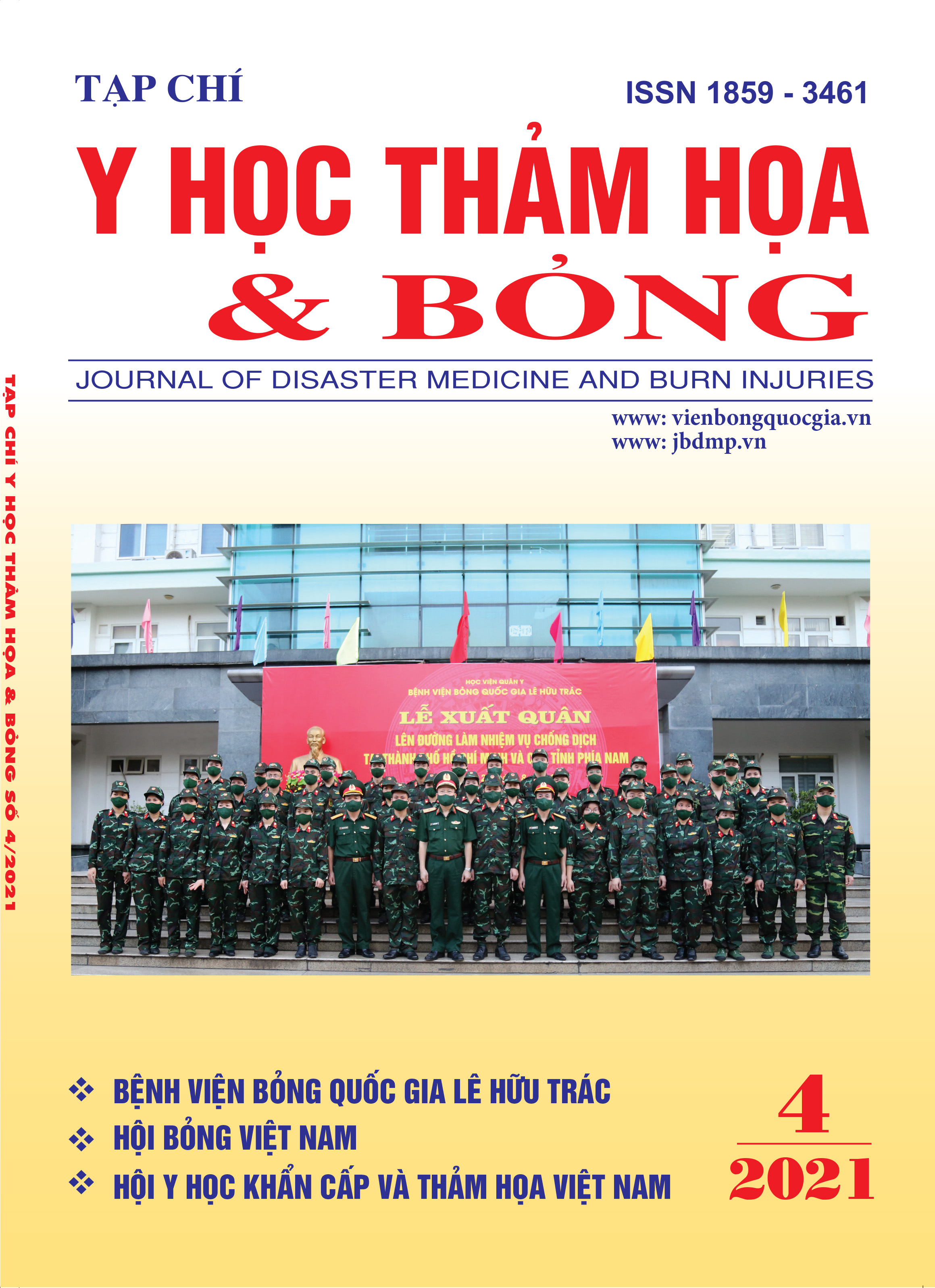Characteristic and outcome of gas-related burns.
Main Article Content
Abstract
This study investigasteđ the characteristics and outcome of 778 patients with gas-related burns at National Burn Hospital from 2015 year to the 2019 year. The results showed that, gas-related burns accounted for 16.59% of total fire-related burn patients. Most patients were adult (87.02%), men (76.22%), living in rural areas (68.12% vs. 31.88%). The main occupations were self-employers (37.92%), farmers (25.32%) and workers (17.22%). The common burn positions were upper extremities (91.52%), head, face and neck (76.48%) and lower limb (75.75%). Inhalation injury accounted for 5.91%, deep burns 25.45%, combined injuries 2.31% and eye burns 1.54%. Overall mortality rate was 7.33%. Multivariate regression analysis showed that age, burn extent, deep burn area, inhalation injury were independent risk factors predicting mortality.
Article Details
Keywords
Gas-related burn, characteristic, outcome
References
2. Ahuja R. B., Dash J. K., Shrivastava P. (2011) A comparative analysis of liquefied petroleum gas (LPG) and kerosene related burns. Burns, 37(8), 1403-1410.
3. Paliwal G., Agrawal K., Srivastava R. et al. (2014) Domestic liquefied petroleum gas: Are we using a kitchen bomb? Burns, 40 (6), 1219-1224.
4. Jin R., Wu P., Ho J. K.et al. (2018) Five-year epidemiology of liquefied petroleum gas-related burns. Burns, 44(1), 210-217.
5. Tarim M. A. (2014) Evaluation of burn injuries related to liquefied petroleum gas. Journal of Burn Care & Research, 35(3), e159-e163.
6. Aldemir M., Kara I. H., Girgin S.et al. (2005) Factors affecting mortality and epidemiological data in patients hospitalized with burns in Diyarbakir, Turkey. South African Journal of Surgery, 43(4), 159-162.
7. Jeschke, M.G., van Baar, M.E., Choudhry, M.A. et al. (2020) Burn injury. Nat Rev Dis Primers 6, 11.


